Imagine a scene from a Hollywood movie set. Stores are closed, except for a bit of tinting on the windows which has a strange resemblance to a bookstore or a supermarket. This gives anyone further back than a few meters away the impression that something is going on inside. Everything is empty all around. As you walk, you notice store after store is empty and the tinting starts to repeat. You wonder to yourself, “Am I lost? Haven’t I already seen that same exact store?” You keep walking and it repeats again and again and again. This is the scene I remember from the last time I went to the northern most premade tourist community in Phú Quốc.
As I was writing the Trương Mỹ Lan article a couple weeks ago, I found myself with a couple larger sections which I was able to completely cut out of the article. One large section I decided to cut out was a rumor I heard about SBC bank having some large holdings in Phú Quốc which might be liquidated. I decided it was better to leave out this entire section as it was only rumor, and I really didn’t know what was happening. Anything I said would only be speculation.
The truth is, I don’t really need to talk about a rumor for people to notice what is happening to Phú Quốc. It is a sad situation which has happened many other times in many other places all around the world. It is the natural evolution of tourist zones which end in the complete destruction of a beautiful scenic location. This cycle has happened so frequently, it has been given a name: Butlers life cycle model. It is the process where a sleepy little fishing village turns into a backpacker’s get away to a small vacation destination to a massive resort to a complete ecological disaster. The only thing local people are left with is dilapidated cheap hotel rooms and concrete ruins.
Shortly after I wrote the Trương Mỹ Lan article, I noticed a bit of buzz around what was happening in Phú Quốc when Couchfish, a popular travel blogger who specializes in South East Asia, did a massive four-part series about sustainable tourism and the death of tourism in Phú Quốc. About the same time, Vietnam Weekly did a podcast series about sustainable tourism where Stuart McDonald of Couchfish made an appearance to promote his blog series and talk a bit more about what was going on there.
I thought maybe I was a bit hasty in tossing this section and decided I would take it out of the trash bin and rework it into a stand-alone article. I cleaned it up and expanded some sections to better capture the full story. Here it is…
The Tragedy of Phú Quốc
It is not a secret that the Covid shutdown hit this island tourism hot-spot hard. Local hotels were shuttered and nearly everyone was sent back to their hometowns. All of the progress in new resort construction was immediately halted in 2020, leaving an apocalyptic wasteland of rotting concrete, half-finished structures turning black with the microscopic flora of moss and mold which is retaking the unfinished construction sites.
For kilometers, heading south from the airport, there are streets of unfinished buildings after unfinished buildings. The first thought might be, “Wow! Covid hit this place hard.” But that wouldn’t really be the whole story. It seems like this economic disaster had already started long before Covid. It’s not just a drop in tourism, it’s everything hitting at the same time.
The seeds of this disaster were already starting before the bank scandals and Vietnamese real estate collapse. I remember going to Phú Quốc before Covid and already noticed certain construction projects starting to slow down. There were massive projects where roads, sewers and water pipes were ready to go, but the construction stalled.
There is a building which I have driven past on a western beach often. It has been an eye sore for as long as I can remember. It started construction in the middle of 2017. By early to mid 2019 it appears to have been abandoned and it has been rotting ever since. There are others like this, rotting all over the island which have stalled for the better part of a decade now.
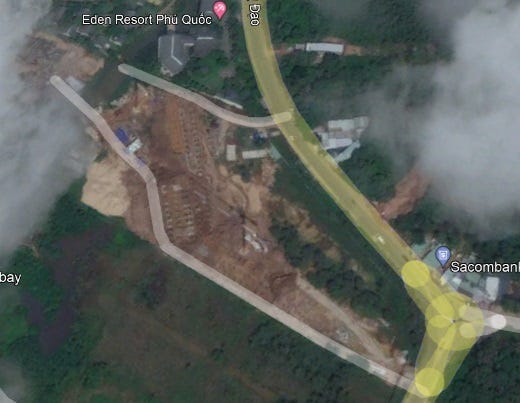
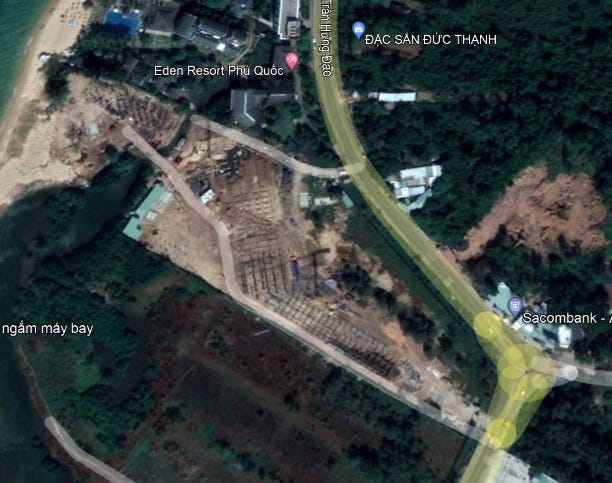
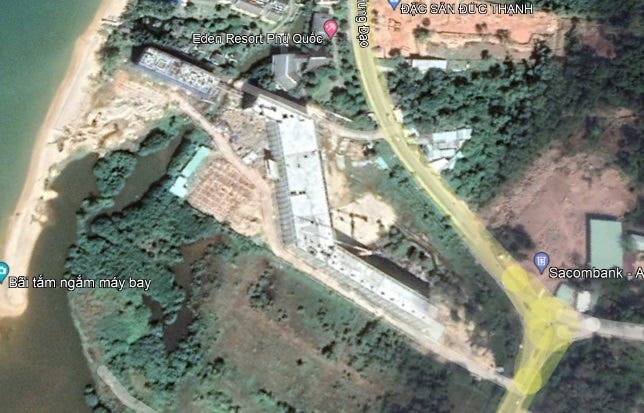
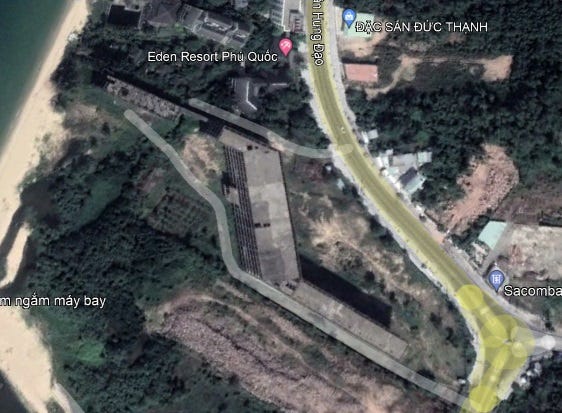
All you need to do is take a trip to the ghost cities located in the northern or southern parts of the island. They were complete, one stop, planned tourist destinations where a person can come for an all-inclusive vacation. There is a safari, an amusement park, a casino, a water park, a night market, fresh seafood restaurants and a shopping district, with an amazing free water and light show at night. …everything you may want in a couple week vacation. Each are designed to give the feeling of a European town for people who might not be able to take the long flight to Europe. The problem is people aren’t showing up.
You may have already noticed that I am not naming any specific developments. The truth is, I don’t really need to name specific developments because this is not a story of one failed tourist attraction. It is a story of the implosion of tourism on this island. I pick on a couple developments, but only in the most generic way possible.
I really want to see tourism in this region succeed. I know how important these developments are to the local economy, not only for the island, but for the entire southern region of Vietnam. The local communities of Southern Vietnam support the island with imported food as well as the many imported workers who maintain the infrastructure and provide services necessary for a comfortable stay. In addition, there are the businesses which support this industry, the taxi drivers, food cart vendors, tour guides and restaurant staff. All of these support staff also need to be supported, so there is the small local economy which takes care of the needs of the workers.
Initially, there was a wave of interest as local shops started filling in; markets, homestays and beer bars filled the streets of the plazas. Excitement grew over the newest regional tourist attraction, developed by the same companies who developed the popular tourist spots near Đà Nẵng and Nha Trang. This should have been the hot spot for Vietnamese tourism.
What happened?
Everything happened a bit too fast. Some people wanted to quickly develop this island for tourism. Why not? There are some great attractions. There is the old prison which was used from the French period until the American backed republic. There is some amazingly fresh seafood. There were even some nice snorkeling and diving spots. …although admittedly, the snorkeling was underwhelming.
Some people must have thought to themselves, ‘this little piece of paradise needs to look like a town on the Italian Riviera.’ …but not really like the Italian Riviera, more like the Vegas version of the Riviera. That is where it started to go wrong.
There is already a great place to go to in Vietnam if you want to duplicate a European vacation, Sun World Bà Nà Hills. That place has one of the most important factors you need if you want to duplicate Europe. It’s kind of cold. This village is at the top of a brisk mountain. There is a gondola ride up to the park entrance and a wonderful scenic bridge, build on two massive hands coming out of the hillside, to walk around near the entrance. All of this makes an amazing first impression when a guest enters the park. It set the mood for the rest of the day of a pleasant tour to a European town, …in the middle of Vietnam.
If you take that same place and plop it down on a hot beach, everyone will start wearing shorts and t-shirts and it will lose some of the effect.
People who go to a beach resort want attractions like a water park or beach front rooms, not a Venice inspired water show. People just can’t buy into the illusion which was being sold and tourists gradually lost interest.
The heat was unbearable at the Safari. From the ticket entrance to the tram cars must have been about a kilometer walk in some of the worst unshaded paths in existence. The mid-day schedule of the Safari seemed to have been planned for the absolute worst time of day, when the sun was at its peak. Water and ice cream venders seemed to be as infrequent as the shade. Anyone smart skipped looking at the small, caged animals along the path to the tram and made a straight march for the tram. Then everyone enters the queue for a half hour wait, surrounded by other miserable hot visitors, only to sit in a hot tram for what seemed like an eternity.
This experience was duplicated, almost identically, at the local amusement park. The only difference was a bit of aircon in some buildings, …if you wanted to spend all day at the fast-food Lotteria inside the park. This fast-food chain seemed to be the most popular attraction at the park. I had lunch and after a half hour of trying to find something interesting, I turned around and left the park. The Safari experience completely drained any energy for another day in the heat.
I am sure many people have had similar experiences and word gets around. When one person has a bad experience, they will tell all of their friends not to go and it won’t be long before the entire place is empty.
There was also the issue of timing. Covid really took the wind out of the sails of these large resorts. When the complex was new, everyone wanted to go. Prices were climbing and storefronts were being snapped up. There seemed to be quite a bit of FOMO because investors seemed to believe that if they didn’t jump on the big development bandwagon, they were going to miss their opportunity to be a part of the largest tourist attraction in South Vietnam. Billions of dollars were pumped into these projects, …and it all suddenly ended.
Few people came for several years. By the time people did start coming again, the newness was already starting to wear off. Everything seemed a bit off. Businesses were already starting to close. All around, empty store after empty store fill the streets. Each store abandoned by merchants who gave it a shot, but two years without business did them in. On top of this weird ghost town feel, there is a feeling that the project was never really finished. There is construction equipment lying around partially finished sections, which seemed silly to build when the prime spots were already being abandoned. It seems like suddenly, everyone just left; workers, shopkeepers, taxi drivers, everyone …they just left.
The larger companies seem to have been the first to leave. Big chains like Lotteria are leaving, as are many of the little markets and restaurants that made this place a pleasant destination to walk around at night.
Typically, the island can rely on the snowbird population of Russia to make an appearance in early winter to fill in any vacancies, but many Russians have their own problems and have decided to stick to their local vacation spots for the last few years.
There is an effort to bring back business with deeply discounted travel packages, but this doesn’t seem to be enough.
Local Business
Vietnam Tourism actually reports massive increases in visitors to the island, but I just don’t see it. I have been coming to the island for years and everything just seems empty now. My friends at the local hotels report they are struggling to get by and many hotels have closed all over the island. Taxi-drivers report that they struggle to make their daily taxi rental price. Restaurants I enjoyed last time I was there are either closed or have said they may close in the near future.
Some of the local hotels and supporting businesses that survived are starting to do better, but the recovery still appears to be years away. Existing inventory of hotel rooms is still greater than the demand. Many of the smaller hotels, which have survived for years, have not been able to survive the recent island closure. It is unlikely they would have survived anyway because the mega-resorts have been soaking up all of the tourist money with all-inclusive packages to keep money from ever leaving the resort grounds into the local economy.
The popular areas such as the famous Phú Quốc night market are just a shell of what they used to be. It still draws a crowd, but the feeling of wanting to walk around and try all of the interesting food is gone. Everything has turned into a monoculture. Instead of a street filled with different stalls offering a variety of foods, there seem to be the same stalls repeated every 25 meters. The foods I enjoyed; exotic treats to test Western taste palates such as pigeon or frog are gone along with the nice savory and dessert crepes …all gone. They are all replaced with the foods Vietnamese think Westerners enjoy or overpriced frozen seafood. It has all completely lost my interest.
Maybe there is hope for the island. Stuart McDonald of Couchfish mentioned that if all construction was immediately halted and any projects which have not been worked on in several years are razed to the ground and replaced with a little local flora, there may be a chance the tourists may return.
Sand Piracy
As I am starting to learn, there is always a bit more to the story. Another problem Phú Quốc has is also the problem many beach islands are having. There is a major sand piracy epidemic which is destroying the lovely beaches around the island. I remember some of the beaches I visited only six or seven years ago had dozens of meters of sand before hitting a very gentle slope into the water. Now, the beach may be less than a dozen or so meters from the hotel bar to the ocean followed by a steeper drop off into the water. The beaches have been sucked out by various cargo barges who come at night and vacuum up the sediment off the coast of the island.
At first, I noticed the mangrove trees disappeared. I thought the receding beach was due to local hotel construction next door removing the local vegetation and shifting around landmarks I knew of from my first visit. My recollection was an area thick with mangroves and vegetation. The vegetation was so thick, I couldn’t pass it and needed to go up to the street and around the forest to get to the next stretch of beach. After a few days into my second trip, I saw a small creek which I barely noticed on my first visit was now a gigantic crevasse requiring an effortful long jump to get across. I didn’t realize it at the time, but the sand was all being sucked up and the deforested beach was only speeding up the process.
All of it is gone now and is hard to replace. The sandy beach I enjoyed on the first trip was gone, along with the rest of the beach after that swampy mangrove area was removed. The very things which attracted me to the island have been replaced with Vegas inspired European theme amusement parks.
What will happen next?
People are spending their tourist dollars to go to cheaper places like Thailand where they can enjoy the beach and nature at a much lower price than at Phú Quốc. Thailand is already further along the Butler life cycle and has reached the rejuvenation phase where they have rebranded the experience as a beach get-away for an inexpensive price. Vietnamese chose to spend their tourist dollars there because it seems a little more exotic than Phú Quốc for a much cheaper price.
Even domestically, the island is facing strong competition as other resort islands are becoming the “go-to” place for Vietnamese as well as an exclusive island resort for wealthy Westerners.
Côn Đảo has been pushing to take a larger portion of tourist dollars by playing into the French Colonial feeling of the local town combined with some of the most amazing beaches in Vietnam. It has become the new popular vacation spot. As I wrote in a previous article about Côn Đảo Island:
Tourists come to the island for its preserved natural beauty and to enjoy the simple pleasures of rustic living for a few days. Spacious remote villas offer privacy which attracts the local celebrity. Today, you may be neighbors with Angelina Jolie or Brad Pitt where rumor has it, when they were together, their family spent some time on the island.
I would love nothing more than to be wrong about Phú Quốc. Maybe the people at Vietnam Tourism were counting people who were going to places I don’t go. Maybe I caught the resorts at a bad time and the construction equipment I saw at the northern tourist village was to prepare for a Grand Re-Opening. Nothing would make me happier than to rewrite this article in a positive tone, letting everyone know how wrong I was. Until then, I need to stick to what I actually saw.
Links I referenced if you wish to learn more:
https://www.travelfish.org/couchfish/news/phu-quoc-overtourism-part1
https://www.travelfish.org/couchfish/news/phu-quoc-overtourism-part2
https://www.travelfish.org/couchfish/news/phu-quoc-overtourism-part3
https://www.travelfish.org/couchfish/news/phu-quoc-overtourism-part4

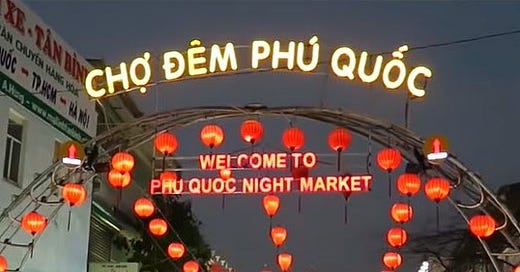

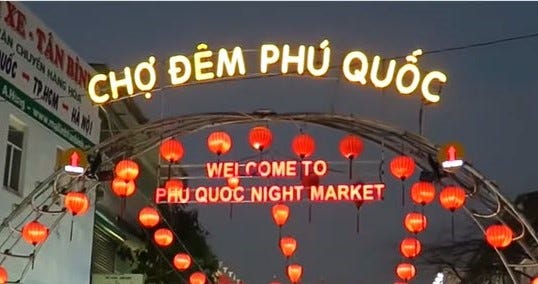

My family (2 VN, 1 expat) went to PQ about 18 months ago and were hugely underwhelmed. We didn’t go to most of the places you mentioned, but your descriptions of the Safari and the night market were spot-on. The entire trip was a huge waste of money and time. After less than 24 hours there, we promised ourselves we would never, ever return.
What a sad state of affairs, and as you and I have mentioned before the sand piracy is at an epidemic stage. Preferably I would much rather go somewhere where it is not another Las Vegas or Disneyland, I like to enjoy the local environment and food plus meet the people of the area. I know tourism to Vietnam is greater than when we first went there, so perhaps one of our favourite spots being Hoi An is not as ‘user friendly’, wandering the streets, watching them mending the nets and boats, checking out the market and dining in fabulous restaurants without needing to book.